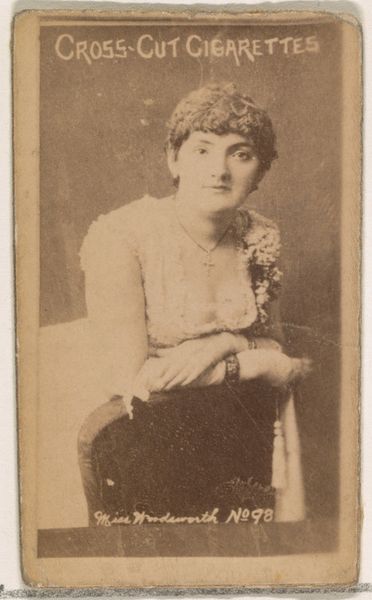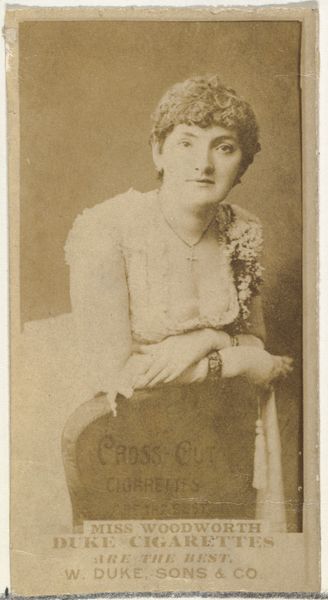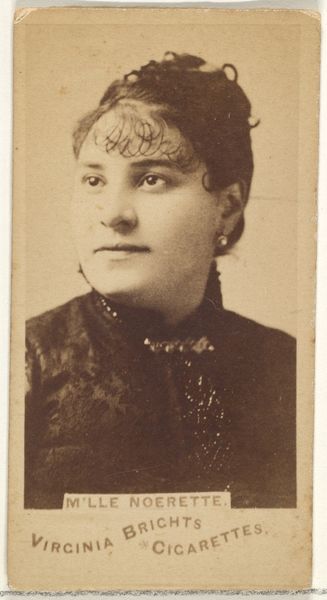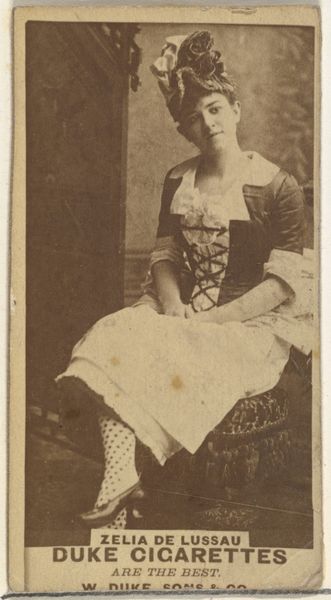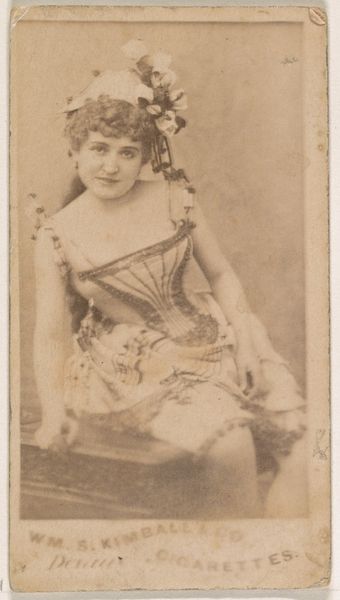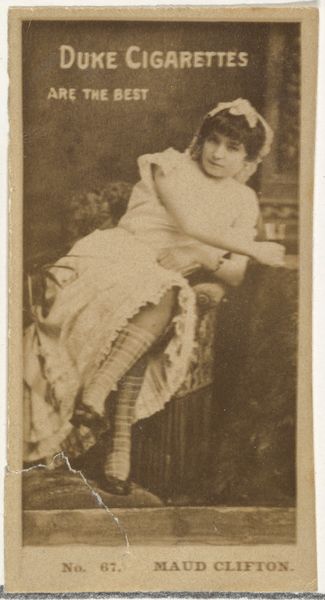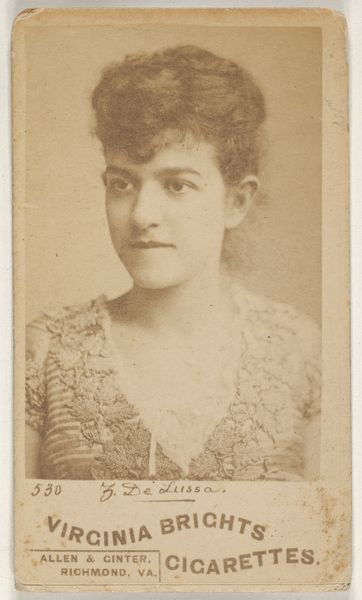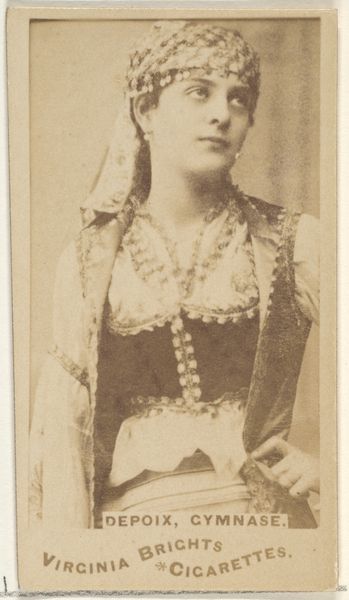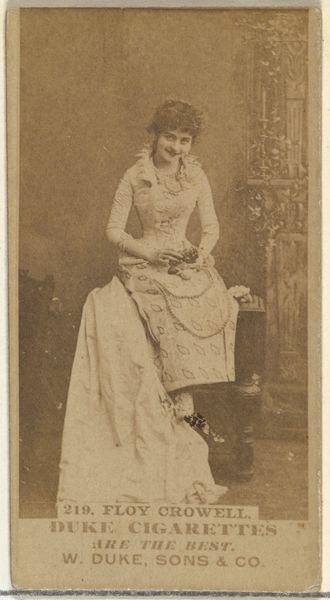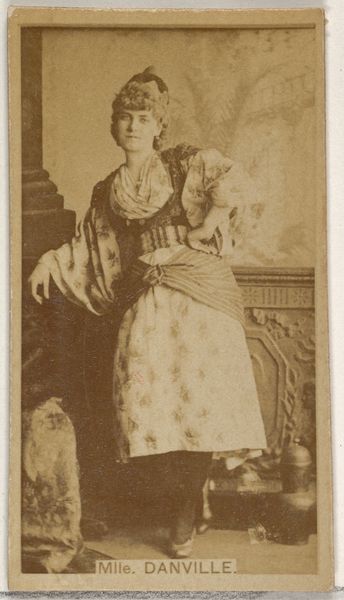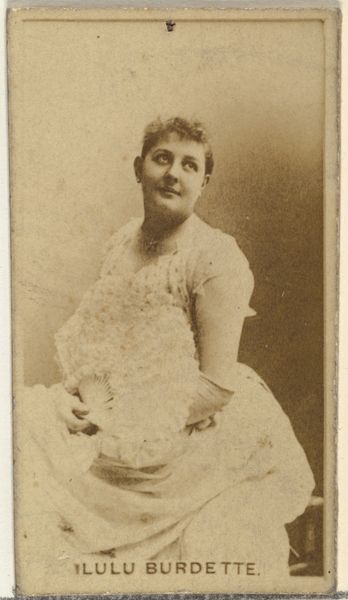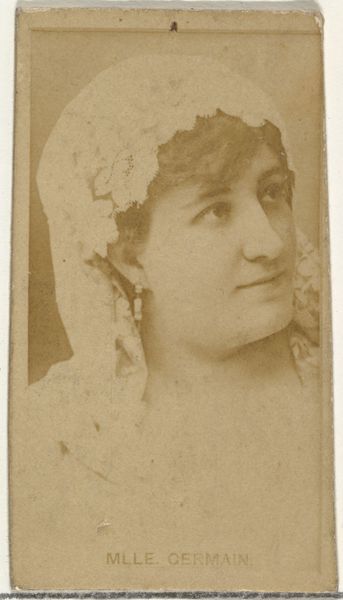
Card Number 98, Miss Woodsworth, from the Actors and Actresses series (N145-2) issued by Duke Sons & Co. to promote Cross Cut Cigarettes 1880s
0:00
0:00
drawing, print, photography
#
portrait
#
drawing
# print
#
figuration
#
photography
#
historical photography
#
19th century
Dimensions: Sheet: 2 5/8 × 1 7/16 in. (6.6 × 3.7 cm)
Copyright: Public Domain
Editor: Here we have "Card Number 98, Miss Woodsworth" from the Actors and Actresses series, a print made by W. Duke, Sons & Co. in the 1880s. It seems so delicate and pretty, like a glimpse into another world. What do you see in this piece, viewed through a more critical lens? Curator: I see the machinery of fame and capital intersecting. These cards, printed en masse, were included with Cross Cut Cigarettes. So, it’s not just a portrait of Miss Woodsworth; it’s also about the industrial processes of printmaking and the rise of mass advertising. How does the mass production aspect change our view? Editor: That's a perspective I hadn't considered. So the value isn't solely in the image itself, but also in the context of its creation and circulation? Curator: Precisely. Consider the labor involved: the photographers, the printers, and the tobacco workers whose labor funded this enterprise. The image of Miss Woodsworth becomes a commodity, circulated to sell another commodity: cigarettes. Editor: So it blurs the lines between art and advertising, and also between artistic value and commercial exploitation. Were these cards considered valuable at the time, or just throwaway items? Curator: A bit of both, I imagine. They were collected, traded, and pasted into albums. But their value was tied to the consumption of cigarettes. Once the cigarettes were gone, what remained was this double image: the residue of celebrity endorsement, and an implicit record of turn-of-the-century tobacco culture. How does that realization impact our interpretation? Editor: It definitely makes me see the image not just as a pretty portrait, but as a product of its time, intertwined with consumerism and labor practices. Thank you for shining a light on all the threads of production. Curator: Absolutely. Thinking about the making of things helps reveal power structures embedded in even the seemingly simplest images. It is really amazing to see how that single image can hold so much when we consider all the aspects that create it.
Comments
No comments
Be the first to comment and join the conversation on the ultimate creative platform.
